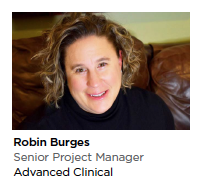Increasing Engagement of the Pediatric Population.
 Rare disease research is an increasingly competitive sector of the clinical research landscape. While rare diseases individually affect a relatively small number of patients, as a category these diseases affect millions of people – and half of those patients are children.
Rare disease research is an increasingly competitive sector of the clinical research landscape. While rare diseases individually affect a relatively small number of patients, as a category these diseases affect millions of people – and half of those patients are children.
For sponsors who are interested in developing rare disease drugs to address these mostly unmet medical needs, creating “child-centric" trials will be critical.
Patient-centricity has been a popular topic in clinical research for years. Creating trials that lower the burden of participation and incorporate patient feedback can improve recruiting outcomes, which is critical in categories where patient populations are small and competition is fierce.
However, patient-centricity takes on new meaning when patients are infants, children, and teenagers. In these cases, the trial has to be designed with their emotional and cognitive needs in mind, and address the hopes and fears of patients and parents if sponsors want to convince them to participate.
When participants are children, using telehealth to reduce site visits and providing wearable devices or portals where they can see test results, is just a small fraction of what makes a trial child-centric.
5 Ways To Make Trials More Child-Centric
1. Engage patient advocates: Rare disease communities affecting children often have powerful patient advocacy groups led by parents searching for treatments. Winning the support of these groups can be instrumental to successful recruiting. But to do that, sponsors need to engage these groups well before recruiting begins and seek their feedback and guidance as they select protocols and design the trial. When selecting sites/PI’s for studies it’s also important to consider their involvement within these communities. This type of early engagement is mutually beneficial. Patient advocates can be a wealth of information about relevant endpoints, patient worries, and common disease journeys. They can also be an excellent funnel for recruiting — if they believe a trial will be in the best interest of their members.
2. Build trust: Patient advocates take different forms in different communities. In the United States patient advocacy groups may meet in online forums while in other countries it may be local leaders or educators. For example, when running a malaria study in Mali, West Africa, we had to get approval from village chiefs before we could launch the trial. To do that, we worked with local scientists and explained the study and informed consent processes with the chiefs to prove that we had the children’s best interests in mind. We also engaged directly with the community, playing soccer with the children to build trust and familiarity. Taking the time to become a trusted presence raised local awareness about our work and gave parents the confidence to enroll their children.
3. Work with pediatric experts: So much of a trial experience is defined by the degree of comfort between the patient and the site and staff – and not every site has what it takes to put children and parents at ease. Consider sites that specialize in pediatrics. For example, facilities with bright colors, murals on the walls, and elements designed to make children feel comfortable like kid-friendly names for treatment rooms. The staff and investigators should also be skilled at working with children and parents and have proven techniques to collect PROs. Sponsors should also look for low turnover rates, as children often develop strong bonds with site staff.
4. Think through subjective measures: Many endpoints require patients to report their experience of a disease or symptoms. Adult patients can comprehend how to measure their pain or hunger on a scale of 1-10, but young children will have a harder time.
Pediatric trials are most effective when PROs are designed for the targeted age group. For example, studies show that 8 to 11 year-olds have a reliable comprehension of health vocabulary and can understand how to complete Likert scales; whereas 5 to 7 year olds may understand basic ideas of feeling healthy/unhealthy or good/bad, but are less reliable in quantifying these feelings.
Cognitive ability will also vary among participants, so it’s important to validate a child’s ability to use PRO tools. Additionally, for some studies, a caregiver may also be designated to complete a PRO for the child, so discussing how the caregiver will evaluate the child’s feelings during the screening process is an important part of the screening process.
5. Limit travel: When planning a study that requires extensive travel, minimizing the burden to families will be critical for recruiting and retention. That means taking into account school hours, work hours, and dinner/bedtime routines. Not all disruption can be avoided, but acknowledging these obstacles and attempting to work around them will ease the disruption and show parents that you respect their time.
Children are among the most vulnerable participants. Creating environments that ease their fear and burden will not only improves retention, but sends a positive message about trial participation, which may influence the broader disease community. To win-over these patients (and their parents), sponsors need to re-examine their entire approach to recruiting, retention, and data collection – and look for ways to make every touchpoint more fun and engaging, while taking into account the challenges of capturing patient reported outcomes (PROs) from young participants.(PV)
Notes:
1. https://www.ncbi.nlm.nih.gov/pmc/articles/PMC6441966/
2. https://www.valueinhealthjournal.com/article/S1098-3015(13)01801-9/fulltext
Advanced Clinical is a global clinical research services organization that provides CRO, FSP, strategic resourcing, and quality and validation services for biopharmaceuticaland medical device organizations.
For more information, visit www.advancedclinical.com.


















